-
Nearly 300,000 UAV owners register with the FAA
Nearly 300,000 owners have registered their small unmanned aircraft in the first thirty days after the Federal Aviation Administration’s (FAA) online registration system went live. Owners who registered in the first month received a refund for the $5 application fee.
-
-
New partnership to advance unmanned systems research, pilot testing
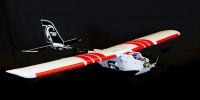
Indiana State University and Raleigh, North Carolina-based PrecisionHawk have signed a research and development partnership that aims to advance the unmanned aerial systems industry from multidisciplinary perspectives. The collaboration will focus on safety, education, training, and algorithm development for PrecisionHawk’s DataMapper aerial data software.
-
-
Mexico to use drones, satellites in a renewed effort to find dead students
Mexico said it would launch a new search, joined by international experts, for the remains of dozens of students training to be teachers who were abducted and apparently massacred in 2014. Forty-three students were abducted by corrupt municipal police, and then turned over to a local drug gang to be killed. Apparently, the gang leaders believed the students were linked to a rival drug gang in the area.
-
-
U.S. to unveil drone registry plan in response to safety, security concerns
As part of the U.S. aviation authorities’ effort to tackle the growing safety and security problems posed by drones, U.S. drone will soon be required to register their aircraft with the Department of Transportation. The register, to be made public on Monday, comes in response to a surge in incidents in which drones have flown near airports and crowded public venues.
-
-
Anti-drone defense system now features quad band RF inhibitor, optical disruptor
The world’s first fully integrated detect-track-disrupt Anti-UAV Defense System (AUDS) — launched by a trio of British companies in May this year — now features a quad band radio frequency (RF) inhibitor/jammer, an optical disruptor, and rapid deployment features in the final production version of the counter-drone system. The companies say that these enhancements follow extensive customer trials of the pre-production system across Europe and North America over the spring and summer.
-
-
Improving precision of drone navigation
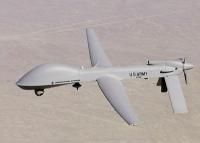
Researchers are working to bring a new level of precision to the navigation systems used to guide drones. The work is supported through a contract with Southern Company, one of the U.S. largest energy companies, which plans to use unmanned aircraft to enhance safety for crews in the field and improve reliability for customers. The researchers have designed a prototype which uses onboard ultrasound sensors to relay information on the aircraft’s location to its operator.
-
-
FAA expands efforts to tackle risk of drones near busy airports
A steep increase in reports of small unmanned aircraft in close proximity to runways is presenting a new challenge for the FAA. The Federal Aviation Administration (FAA) has entered into a Pathfinder agreement with CACI International Inc. to evaluate how the company’s technology can help detect Unmanned Aircraft Systems (UAS) in the vicinity of airports.
-
-
FAA proposes $1.9 million civil penalty for unmanned drone operations
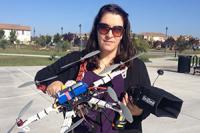
The Federal Aviation Administration (FAA) the other day announced the largest civil penalty the FAA has proposed against a drone operator for endangering the safety of U.S. airspace. The FAA proposes a $1.9 million civil penalty against SkyPan International, Inc. of Chicago. The FAA says that SkyPan conducted sixty-five unauthorized operations in some of the U.S. most congested airspace and heavily populated cities, violating airspace regulations and various operating rules.
-
-
Engineers design invisibility cloak for military drones
Inspired by the well-known Invisibility Cloak from Harry Potter, electrical engineers have created a new design for their cloaking device, using a Teflon substrate, studded with cylinders of ceramic, which is thinner than any prior development and does not alter the brightness of light around concealed objects. The Teflon has a low refractive index, while the ceramic’s refractive index is higher, which allows light to be dispersed through the sheet without any absorption. Compared to an invisibility cloak, this technology has not only the ability to conceal, but the ability to increase optical communication signal speed and to collect solar energy.
-
-
Data show drone attacks doomed to fail against ISIS in Syria
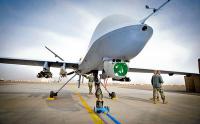
This week, the Washington Post published a story about a new U.S. plan to use lethal drone strikes in Syria to destroy ISIS capabilities on the ground. The desire to do something — anything — to destroy the capabilities of a group so luridly destructive is understandable, but our haste to show results will likely result in a hollow victory at best. But there is a problem: there’s no evidence that drone strikes work. On the contrary, ample evidence shows drone strikes have not made Americans safer or reduced the overall level of terrorist capability. The strikes amount to little more than a waste of life, political capital, and resources. Drones cannot deliver victory over ISIS, but in any event, lacking a cohesive, articulate political strategy for governance and post-ISIS reconstruction, no military solution can produce the results we’re looking for. Lacking the political strategy, more of the same in Syria promises no better.
-
-
Counter-drone technologies demonstrated at DoD’s Black Dart event
Small, unmanned aircraft systems (UASs, aka UAVs, for unmanned aerial vehicle), or drones, are easy to obtain and launch and they are hard to detect on radar, making them of particular concern to law enforcement and the Department of Defense. Earlier this month DHS circulated an intelligence assessment to police agencies across the United States warning about drones being used as weapons in an attack. DOD says that Black Dart 2015, which began 26 July and ran through 7 August, is the Department of Defense’s largest live-fly, live-fire joint counter-UAS technology demonstration. One of the innovative developers of counter-UAS technologies is SRC Inc., a not-for-profit company formerly affiliated with Syracuse University. The company showed its SR Hawk surveillance radar, which is integral to its layered approach to defending against UASs.
-
-
Sound waves disable drones by disrupting the drone’s gyroscope
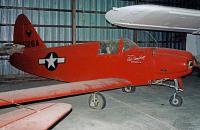
Hobbyists’ drones are becoming a growing national nuisance – violating people’s privacy, breaching security-sensitive airspace, disrupting attempts by firefighters to bring wildfires on the West Coast under control, and more. South Korean scientists report that sound waves could offer an effective protection from drones.
-
-
New air traffic management system to make drone air traffic safer
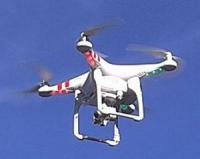
Researchers are now working on a new, low-altitude traffic management system to keep fast-moving flyers safer as they cruise through increasingly crowded skies. A handful of organizations are participating in the first phase of the NASA Ames Unmanned Aerial Systems Traffic Management project to enable safer use of low-altitude airspace, of 500 feet and below, where autonomous aerial vehicles, helicopters, gliders, and other general aircraft are operating.
-
-
DHS warns local law enforcement to watch for drones used by terrorists, criminals
DHS has circulated an intelligence assessment to police agencies across the United States warning about drones being used as weapons in an attack. The bulletin went out Friday and warned state and municipal law enforcement agencies that terrorist and criminals may begin to use drones to advance their goals. “Emerging adversary use of Unmanned Aircraft Systems [UAS] present detection and disruption challenges,” the intelligence bulletin warns.
-
-
FAA investigating teen’s gun-toting drone
An 18-year-old Connecticut man may have run afoul of federal aviation regulation after posting a video on YouTube showing a small drone hovering about ten of fifteen feet above ground in a wooded area while a gun strapped to it was firing shots. The FAA said Tuesday it was investigating whether Austin Haughwout of Clinton violated the agency’s regulations, which ban the careless or reckless operation of a model aircraft.
-
- All
- Regional
- Water
- Biometrics
- Borders/Immig
- Business
- Cybersecurity
- Detection
- Disasters
- Government
- Infrastructure
- International
- Public health
- Public Safety
- Communication interoperabillity
- Emergency services
- Emergency medical services
- Fire
- First response
- IEDs
- Law Enforcement
- Law Enforcement Technology
- Military technology
- Nonlethal weapons
- Nuclear weapons
- Personal protection equipment
- Police
- Notification /alert systems
- Situational awareness
- Weapons systems
- Sci-Tech
- Sector Reports
- Surveillance
- Transportation
Advertising & Marketing: advertise@newswirepubs.com
Editorial: editor@newswirepubs.com
General: info@newswirepubs.com
2010-2011 © News Wire Publications, LLC News Wire Publications, LLC
220 Old Country Road | Suite 200 | Mineola | New York | 11501
Permissions and Policies
Editorial: editor@newswirepubs.com
General: info@newswirepubs.com
2010-2011 © News Wire Publications, LLC News Wire Publications, LLC
220 Old Country Road | Suite 200 | Mineola | New York | 11501
Permissions and Policies
